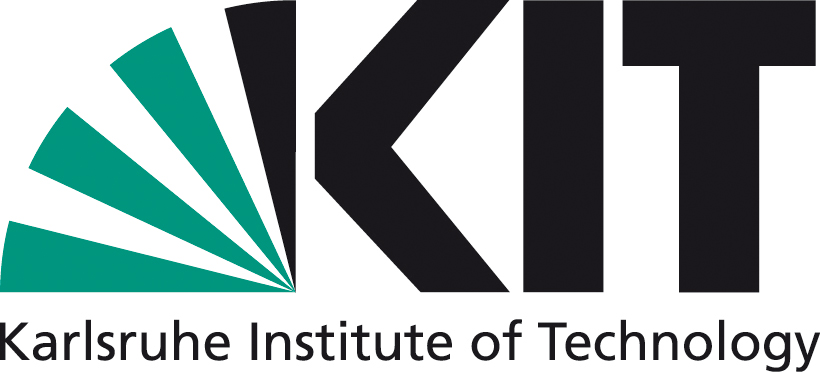New sequencing methods
New data and new challenges
DOI:
https://doi.org/10.14512/tatup.30.2.11Keywords:
NGS, technoscience, transformation processes, archaeogeneticsAbstract
Today, DNA sequencing is part of the standard repertoire of biological and medical research. Next generation sequencing (NGS), established around the mid-2000s, was the main catalyst for this development. NGS has led to major knowledge gains in the molecular life sciences. However, the new technology provides data that pose new challenges that both science and society still must learn to deal with. A technology-driven dynamic can already be observed in this field, leading to transformation processes in science, where new fields of research are emerging, but also in society, where questions of identity are increasingly being negotiated based on genetic analyses.
References
Böhme, Hartmut (2007): Kulturgeschichte der Technik. In: Hartmut Böhme, Peter Matussek and Lothar Müller (eds.): Orientierung Kulturwissenschaft. Was sie kann, was sie will. Hamburg: Rowohlt, pp. 164–179.
Bösl, Elsbeth (2017): Doing ancient DNA. Zur Wissenschaftsgeschichte der aDNA-Forschung. Bielefeld: transcript.
Chiara, Matteo et al. (2021): Next generation sequencing of SARS-CoV-2 genomes. Challenges, applications and opportunities. In: Briefings in Bioinformatics 22 (2), pp. 616–630.
Dewey-Hagborg, Heather (2017): Probably Chelsea. In: Heather Dewey-Hagborg and Chelsea Manning (eds.): A becoming resemblance. New York: Fridman Gallery, pp. 11–16. Available online at https://deweyhagborg.com/content/6-projects/11-probably-chelsea/a-becoming-resemblance_catalog_online.pdf, last accessed on 05. 05. 2021.
Edgerton, David (2006): The shock of the old. Technology and global history since 1900. London: Oxford University Press.
Frieman, Catherine; Hofmann, Daniela (2019): Present pasts in the archaeology of genetics, identity, and migration in Europe. A critical essay. In: World Archaeology 51 (4), pp. 528–545.
Furholt, Martin (2020): Biodeterminism and pseudo-objectivity as obstacles for the emerging field of archaeogenetics. In: Archaeological Dialogues 27 (1), pp. 23–25.
Hagner, Michael (2012): Wissenschaft und Demokratie oder: Wie demokratisch soll die Wissenschaft sein? In: Michael Hagner (ed.): Wissenschaft und Demokratie. Frankfurt a. M.: Suhrkamp, pp. 9–50.
Jones, Elizabeth; Bösl, Elsbeth (2021): Ancient human DNA. A history hype (then and now). In: Journal of Social Archaeology 21 (2), pp. 236–255.
Källén, Anna; Mulcare, Charlotte; Nyblom, Andreas; Strand, Daniel (2019): Archaeogenetics in popular media. Contemporary implications of ancient DNA. In: Current Swedish Archaeology 27, pp. 69–91.
Maran, Joseph (in press): Archaeological cultures, fabricated ethnicities and DNA research. “Minoans” and “Mycenaeans” as case examples. In: Uri Davidovich, Sveta Matskevich and Naama Yahalom-Mack (eds.): Material, method, and meaning. Papers in Eastern Mediterranean archaeology in honor of Ilan Sharon. Münster: Zaphon.
McGonigle, Ian; Benjamin, Ruha (2016): The molecularization of identity. Science and subjectivity in the 21st century. In: Genetics Research 98, E12.
Meier, Mischa; Patzold, Steffen (2021): Gene und Geschichte. Was die Archäogenetik zur Geschichtsforschung beitragen kann. Stuttgart: Hiersemann.
Möser, Kurt (2010): Fortdauer und Wiederkehr des Alten in der Technik. In: Andreas Böhn and Kurt Möser (eds.): Techniknostalgie und Retrotechnologie. Karlsruhe: KIT Scientific Publishing, pp. 17–40.
Nordmann, Alfred (2008): Technikphilosophie. Zur Einführung. Hamburg: Junius.
Nye, David (2006): Technology matters. Questions to live with. Cambridge, MA: MIT Press.
Reich, David (2018): Who we are and how we got here. Ancient DNA and the new science of the human past. Oxford: Oxford University Press.
Renn, Ortwin (2011): Neue Technologien, neue Technikfolgen. Ambivalenz, Komplexität und Unsicherheit als Herausforderung der Technikfolgenabschätzung. In: Christian Kehrt, Peter Schüssler and Marc-Denis Weitze (eds.): Neue Technologien in der Gesellschaft. Akteure, Erwartungen, Kontroversen und Konjunkturen. Bielefeld: transcript, pp. 63–76.
Robert Koch Institut (2021): Genomsequenzierung von SARS-CoV-2-positiven Proben bei Verdacht auf das Vorliegen einer Variant of Concern (VOC). Infobrief (22 January 2021, updated 19 April 2021) für Gesundheitsämter. Available online at https://www.rki.de/DE/Content/InfAZ/N/Neuartiges_Coronavirus/DESH/CorSurV_Brief_Gesundheitsamt.pdf?__blob=publicationFile, last accessed on 02. 05. 2021.
Samida, Stefanie (2020): Über mediale Präsenz und Prominenz DNA-gestützter Vergangenheitsforschung. In: NTM: Zeitschrift für Geschichte der Wissenschaften, Technik und Medizin 28 (2), pp. 181–192.
Samida, Stefanie (2021): Molekularbiologie und Archäologie. Eine ungewöhnliche Beziehung. Wien: Turia + Kant.
Schrock, Roddy (2017): Release and becoming. In: Heather Dewey-Hagborg and Chelsea Manning (eds.): A becoming resemblance. New York: Fridman Gallery, pp. 5–7. Available online at https://deweyhagborg.com/content/6-projects/11-probably-chelsea/a-becoming-resemblance_catalog_online.pdf, last accessed on 05. 05. 2021.
Sommer, Marianne; Krüger, Gesine (eds.) (2011): Biohistorische Anthropologie. Knochen, Körper und DNA in Erinnerungskulturen. Berlin: Kadmos.
Strand, Daniel; Källén, Anna (2021): I am a Viking! DNA, popular culture and the construction of geneticized identity. In: New Genetics and Society.
Published
How to Cite
Issue
Section
License
Copyright (c) 2021 Elsbeth Bösl, Stefanie Samida

This work is licensed under a Creative Commons Attribution 4.0 International License.








